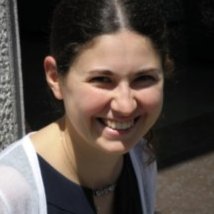Helical Chirality in Chemistry, Materials Science and Biology
A special issue of Molecules (ISSN 1420-3049).
Deadline for manuscript submissions: closed (1 March 2020) | Viewed by 7690
Special Issue Editors
Interests: synthesis; organometallic chemistry; heterohelicenes; chiral sensors; chiral biheteroaryls; peptide nucleic acids; bioorganometallics, hybrid organic-inorganic nanostructures; bio-imaging
Special Issue Information
Dear Colleagues,
It is my great pleasure to announce the Special Issue “Helical Chirality in Chemistry, Materials Science and Biology”, which will appear in the journal Molecules.
Chiral spiral and helical structures and shapes are widespread geometrical forms both in natural and in man-made structures, and are present in the morphology of many physical and biological systems. Indeed, the elegant three-dimensional shape is associated with various natural and unnatural items (objects, plants, and animals). Among these, representative and very different examples are the shape of human brain and of the mammalian cochlea, the snail shell, the spiraling of plants and of certain flowers, spiral galaxies, and the eye of a storm.
Spiral and helical structures and shapes show fundamental properties related to high levels of organization, including molecular, cellular, morphological, and functional. Indeed, it is known that through the utilization of the DNA double helix, nature has conceived one of the most brilliant and elegant ways to store, transfer, and express genetic information in living systems.
All these examples demonstrate that nature utilizes the aesthetically appealing helix to optimize both function and utilization of space.
Chiral helical molecules have always stimulated great interest within the scientific community due to their challenging synthetic aspects and manifold properties which arise from the combination of the chemical structure and spatial arrangement. This is why systems endowed with helical chirality have found applications in many and diverse research fields, such as material sciences, biology, and in a more general sense, in chemistry (e.g., catalysis).
The present Special Issue aims to collect original research papers and review articles demonstrating recent developments in the synthesis and highlighting the properties of helical chiral organic molecules as well as their application, with a special focus on material sciences and biology.
I strongly encourage scientists active in the field of helical chiral molecules to contribute to this Special Issue.
Prof. Emanuela LicandroDr. Silvia Cauteruccio
Guest Editors
Manuscript Submission Information
Manuscripts should be submitted online at www.mdpi.com by registering and logging in to this website. Once you are registered, click here to go to the submission form. Manuscripts can be submitted until the deadline. All submissions that pass pre-check are peer-reviewed. Accepted papers will be published continuously in the journal (as soon as accepted) and will be listed together on the special issue website. Research articles, review articles as well as short communications are invited. For planned papers, a title and short abstract (about 250 words) can be sent to the Editorial Office for assessment.
Submitted manuscripts should not have been published previously, nor be under consideration for publication elsewhere (except conference proceedings papers). All manuscripts are thoroughly refereed through a single-blind peer-review process. A guide for authors and other relevant information for submission of manuscripts is available on the Instructions for Authors page. Molecules is an international peer-reviewed open access semimonthly journal published by MDPI.
Please visit the Instructions for Authors page before submitting a manuscript. The Article Processing Charge (APC) for publication in this open access journal is 2700 CHF (Swiss Francs). Submitted papers should be well formatted and use good English. Authors may use MDPI's English editing service prior to publication or during author revisions.
Keywords
- helical systems
- helical-shaped materials
- helicenes
- chiral biaryl systems
- chiral sensors
- helix in biology
- chiral recognition
Benefits of Publishing in a Special Issue
- Ease of navigation: Grouping papers by topic helps scholars navigate broad scope journals more efficiently.
- Greater discoverability: Special Issues support the reach and impact of scientific research. Articles in Special Issues are more discoverable and cited more frequently.
- Expansion of research network: Special Issues facilitate connections among authors, fostering scientific collaborations.
- External promotion: Articles in Special Issues are often promoted through the journal's social media, increasing their visibility.
- Reprint: MDPI Books provides the opportunity to republish successful Special Issues in book format, both online and in print.
Further information on MDPI's Special Issue policies can be found here.







